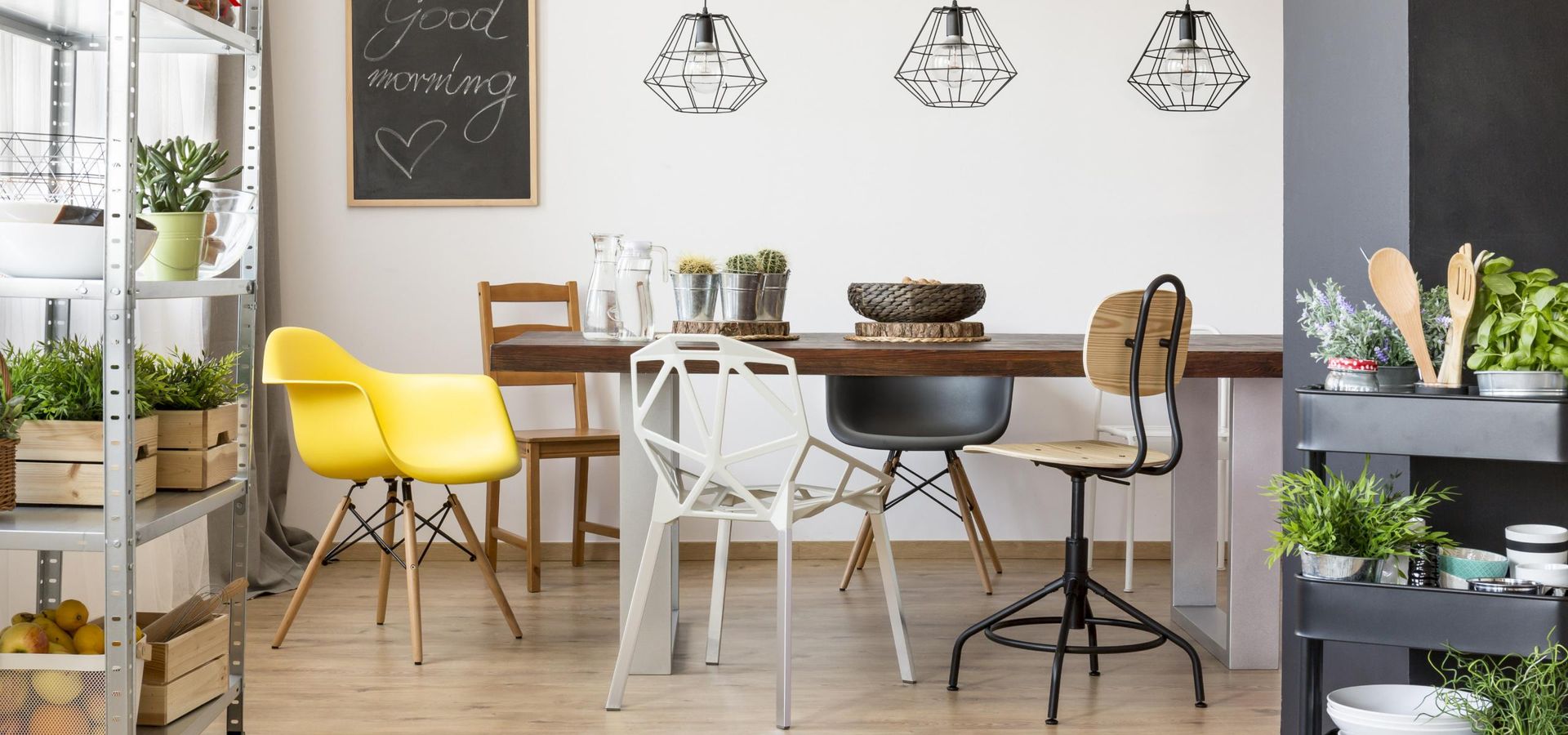
A furniture manufacturing software suite
Itransition’s dedicated development center has helped a leading UK furniture manufacturer to grow sales by 21%, transform their back-office workflows, and pioneer VR-based customer engagement.
Context
Our customer is a leading UK kitchen manufacturer and retailer with 90+ distribution centers nationwide. The company runs its in-house IT department that develops and maintains their software tools for automating the production, logistics, warehousing and sales processes. However, as the company was growing quickly and expanding its production lines, distribution channels, and global footprint, they opted for team augmentation to cover the pool of associated development projects.
Itransition won the bid to become the technology services vendor thanks to our commercial experience with PHP and cloud technologies, Agile maturity, and the perfect cultural fit with the customer’s organization, as demonstrated in a pilot project.
Solution
Back in 2015, Itransition set up a dedicated development center (DDC) for delivering frontend, backend, and mobile software engineering services, which spanned the customer’s proprietary CRM system, ecommerce websites, and business automation tools. In addition to this ongoing work, our team also provides technical coordination, architecture design, and development of key features related to the custom furniture manufacturing software.
The VR kitchen design tool
Itransition’s DDC developed one of the company’s major customer engagement products — an online kitchen design tool. The web application provides customization options for modeling the furniture size, color, shape, and arrangement. It enables designers to create detailed kitchen plans with appliances, worktops, tiles, and other fittings visualized in a hands-on way.
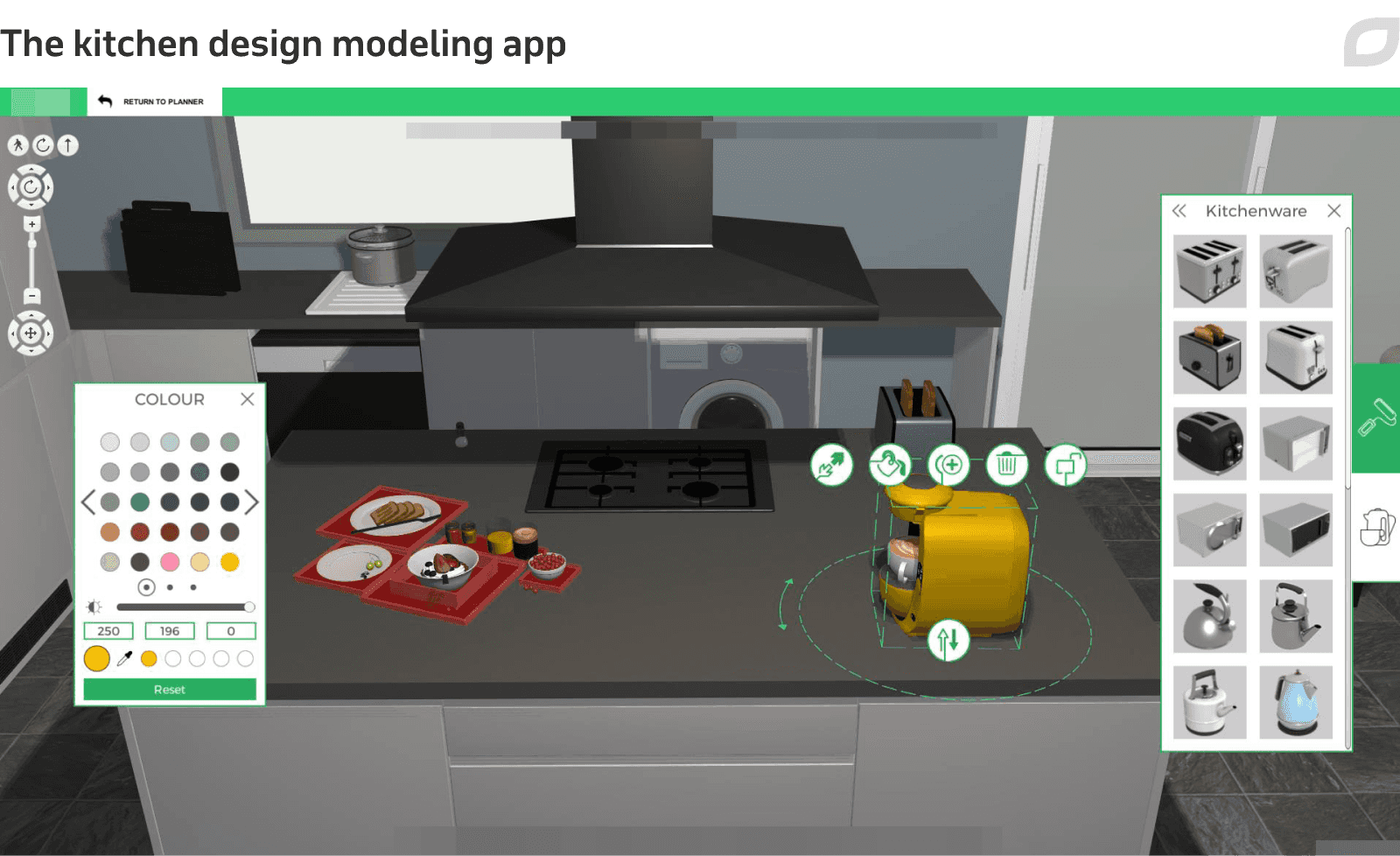
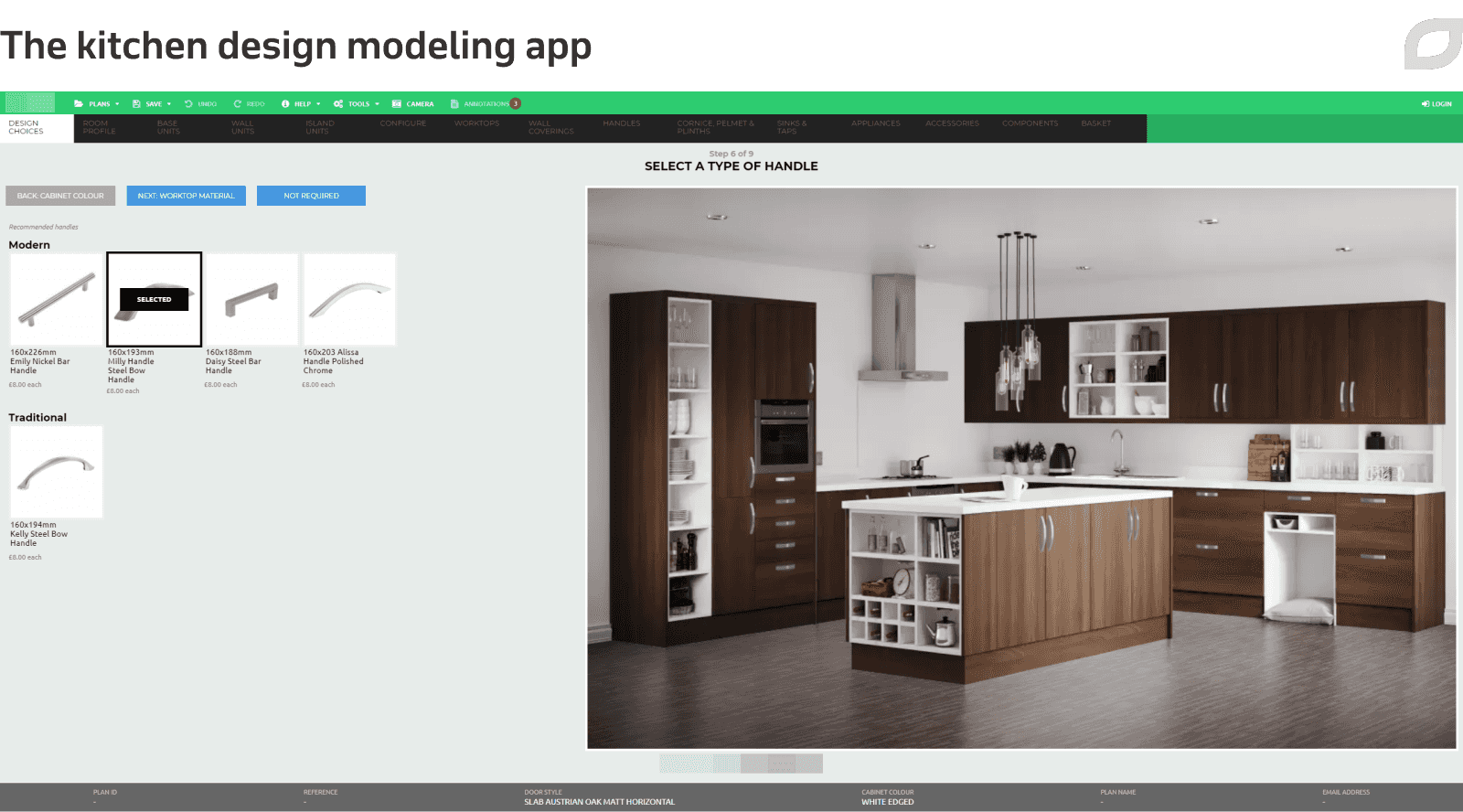
The application renders interactive 3D graphics without using any plugins. As a result, this kitchen design modeling tool runs on all devices, as well as works with VR headsets.
For this, our virtual reality developers created a VR module that places Unity 3D kitchen models into the VR scene and makes them available via the HTC Vive headset. The application creates a fully immersive styling experience, where potential kitchen buyers can walk around their virtual kitchen, open and close units, as well as select different layouts and materials as they go.

The custom CRM/ERP system
Itransition’s DDC also took part in developing the customer’s manufacturing software solution combining ERP and CRM capabilities, launching hundreds of optimizations and functional extensions for it. This business-critical solution compiles data about furniture buyers throughout physical and digital channels, including the integrated web/VR kitchen modeling application. The kitchen plans created with the help of this application get automatically converted into quotes and pushed to the CRM/ERP system, where these quotes are processed and further converted into orders.
The warehouse management system
To help the customer manage their procurement and warehouse processes, we developed a brand-new warehouse management solution in place of the legacy off-the-shelf system that was no longer meeting the company’s business scale. The new solution was integrated with the IFS Warehouse Data Collection and the CRM/ERP system.
In the warehouse management system, there are the following user roles:
- Buyers, who manage procurement, create purchase requests (PR) and purchase orders (PO), set purchase prices and the amount of items required, as well as select suppliers.
- Approval managers, who approve PRs and authorize the selected suppliers.
- Warehouse staff, who handle inventory transactions, manage the stock and reservations, receive purchased goods, and dispatch orders to the distribution centers.
- Admins, who manage locations, location rules, types, zones, etc.
The system comes preloaded with the set of business rules that trigger the change of the PO status to ‘awaiting approval’, ‘received’, ‘cancelled’, etc. based on specific actions. The system also enables tracking stock movement between different warehouses.

Forecast reports. This feature we implemented in the warehouse management system allows automatically calculating the amount of goods to be purchased. The system generates XLS files containing data on the historical usage and future demand for specific goods, thus enabling the warehouse staff to make informed decisions.
The aggregated dashboard. To facilitate procurement management, we created an aggregated dashboard that provides users with a quick access to the most essential data, such as order statuses, outstanding orders, shortages, etc.
The standalone shipment tracking solution. As the customer used the services of third-party logistic companies to deliver their orders, we implemented a system to automate shipment-associated processes. The system assigns vehicle entry and destination points as well as facilitates managing logistic workflows between warehouses.
Employee data management
We developed a solution for storing and managing employee data, including basic details, headshots, phone numbers, departments, previous employment history, etc. This data is initially added to the customer’s Sage accounting system when a new employee is hired, and then gets imported to this employee data management solution.
The solution is also designed to support user role and permission management. It serves as a single entry point, enabling the customer’s employees to use one corporate account for all the business applications in place.
The e-learning management system
For employee training and knowledge assessment, we delivered a SCORM-based learning management system (LMS). It provides training courses for the customer’s employees and ensures smooth onboarding.
All new employees should pass training courses (either with the course instructor or individually) and receive the status ‘graduated’. If a user doesn’t pass the necessary courses, they won’t be able to log into any of the customer’s solutions. Some courses, for example, about the GDPR guidelines, should be repeated in specific intervals to confirm an employee’s qualification, otherwise their accounts will be blocked.
There are different types of courses to pass depending on the employees’ roles. For each of the roles, we created separate learner profiles (e.g., for kitchen designers) with associated training courses, which are divided into compulsory and supplementary ones and broken down into stages and modules. At the end of each course, all users pass a quiz.
In the LMS admin panel, the customer’s learning managers can view employees’ profiles, core skills, training statuses (e.g., in progress, completed), and the history of all the taken training courses. It’s also possible to generate reports on employees’ training progress.
Mobile apps
Itransition also assisted the customer’s in-house team in enterprise mobile application development. We developed the mobile app for furniture installers working on site, which helps them create orders, calculate associated costs, and generate all the necessary documents that can be signed digitally.
Another mobile app was for claim management, which allows users to fully document any arising complaints, take and upload related pictures, manage the claim, and build associated reports on the go.
For advanced data protection in these corporate mobile apps, we implemented user data encryption and performed testing to detect jailbreaking.
More software solutions
To enhance the customer’s business workflows, we delivered more software solutions relevant to the furniture manufacturing domain:
Ecommerce module implementation. We developed and implemented an ecommerce module supporting centralized order processing. Based on PHP, the module is integrated with the corporate CRM/ERP system and runs on a flexible CMS for managing product catalogs.
Finance management. We created a separate payment management solution for the ecommerce module and integrated it with Sage Pay and Worldpay for secure online payments. Moreover, we integrated the solution with one of the customer’s partner banks, so that buyers could take a loan to purchase a kitchen right in the system, without visiting a bank.
Print management. We created a custom print management application to make it easier for employees to follow the intricate rules for printing out different types of documents and branding materials with particular printers installed on the customer’s premises.
US market localization. When the customer made the decision to expand to the US market, we helped them get their business management systems ready for this move. We implemented feature toggles for turning particular features on or off for UK and US warehouses. We also made the systems support multiple currencies and performed their localization so that they met the US standards of spelling, measurement units, time zones, and more.
Together with Itransition, we delivered some of the most exciting products in our history as well as in the UK kitchen industry... Thanks to Itransition we are supporting the required rate of business change with high-profile corporate-level and customer-facing solutions.

IT Director
Process
A dedicated development center within the mixed delivery model was the one chosen for the project.
Over the five years of cooperation, Itransition’s dedicated development center has grown to 100+ professionals divided into 20+ sub-teams with various responsibilities, such as the frontend, the backend, R&D, and more. Each team comprises 2-8 developers, 1-2 business analysts, and 3-5 QA engineers from both Itransition’s and the customer’s sides. In each team, there’s also a Scrum Master who represents the customer.
We adopted the following project management and collaboration tools:
- Atlassian Jira for sprint planning, task distribution, and job tracking
- Confluence and Slack for smooth collaboration and communication
- Xray for test planning, execution and reporting
- Jenkins and Bitbucket for continuous integration
Agile implementation
We opted for the Scrum development methodology with two-week sprints as the right fit for an incremental product build-up with the flexibility necessary to introduce changes, create backups, and see the contribution of each team member. The Scrum-based project flow and communication is arranged as follows:
Security controls
Itransition follows the customer’s data protection requirements and guidelines during the entire software development lifecycle, while also adhering to the ISO-compliant quality management and security management systems.
In addition, our QA team systematically performs vulnerability testing to identify and eliminate potential threats. Our team doesn’t have access to the customer’s live data. When migrating the data to our testing environment, all sensitive information is encrypted, thus ensuring confidentiality and data protection.
To create a GDPR-compliant environment, we made a series of timely changes to the applications processing customer data, including the CRM/ERP system and the mobile apps. For example, now end customers’ personal data is stored only in agreements, with access restricted to particular employees only. We also limited the period of time during which users’ personal data can be stored in the applications.
Results
For over five years, Itransition has been a reliable technological partner of the UK kitchen manufacturing company, driving their continuous digital transformation. More than 100 professionals have been working on furniture manufacturing software development which spanned both back-office and customer-facing solutions.
These solutions helped the customer grow their sales by 21% and significantly improve their business processes, while also helping them expand their business into the luxury segment alongside their affordable furniture range. Together, we also pioneered innovative ways of digital engagement, such as the VR-based kitchen design experience.
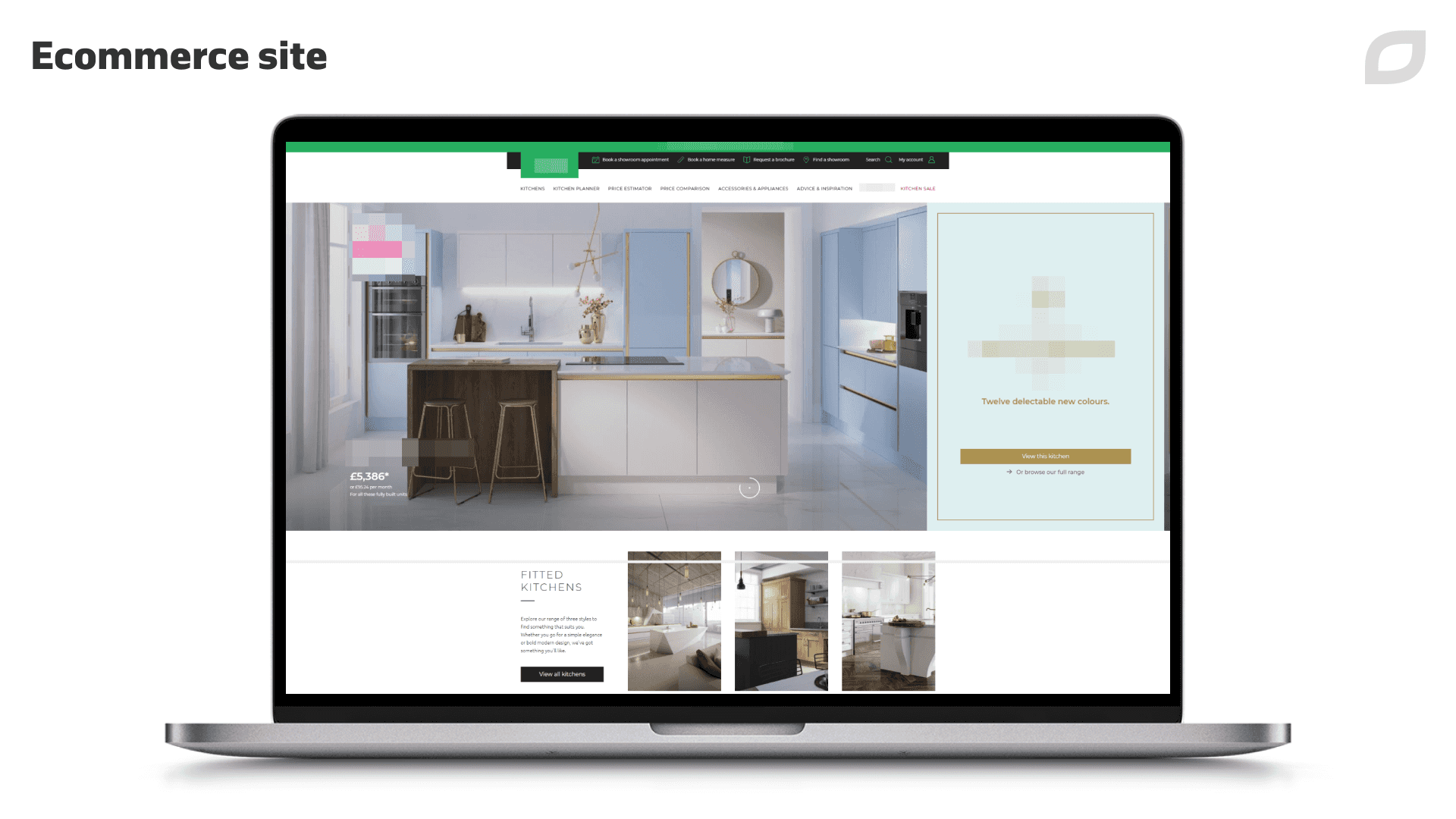

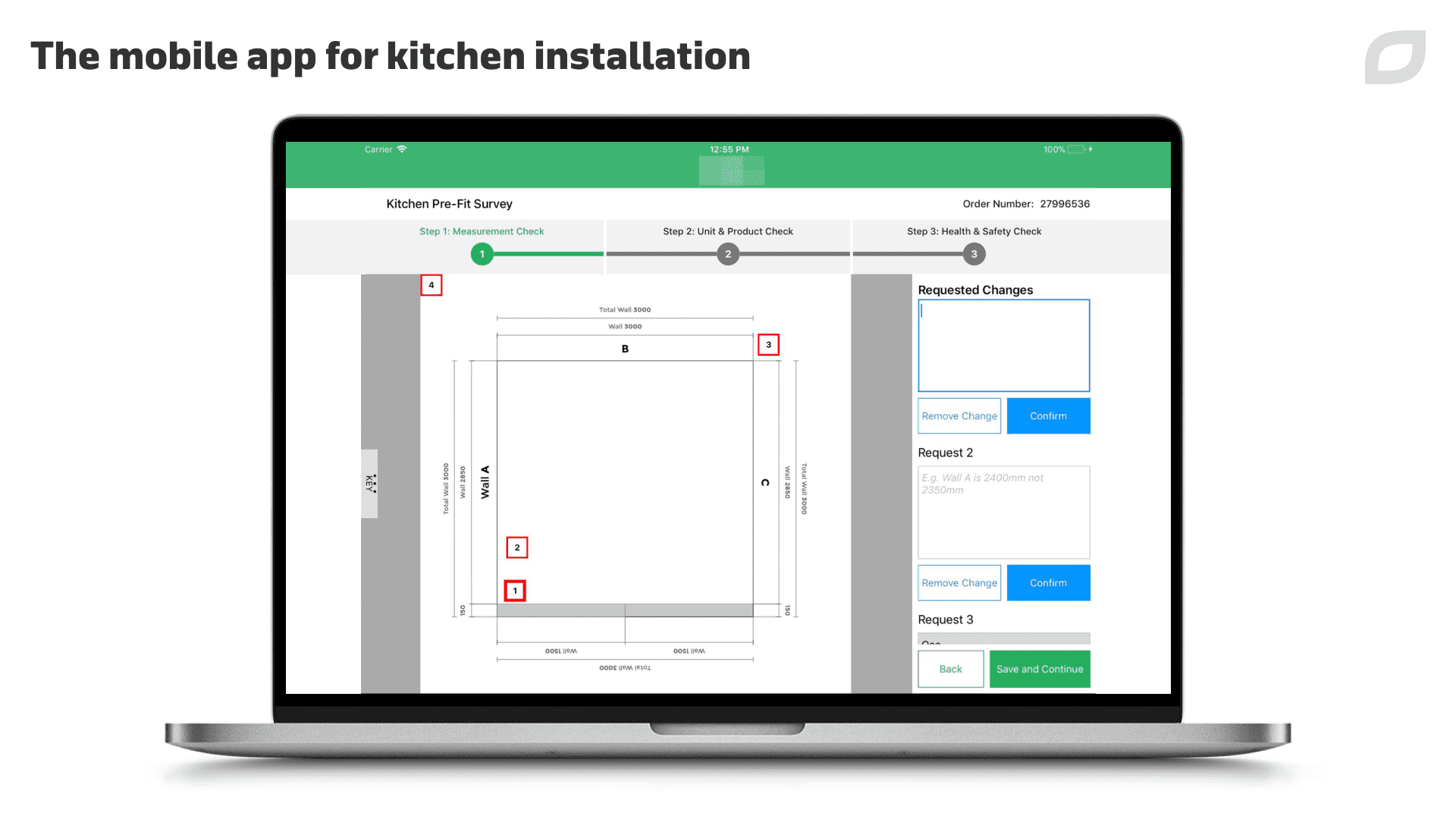
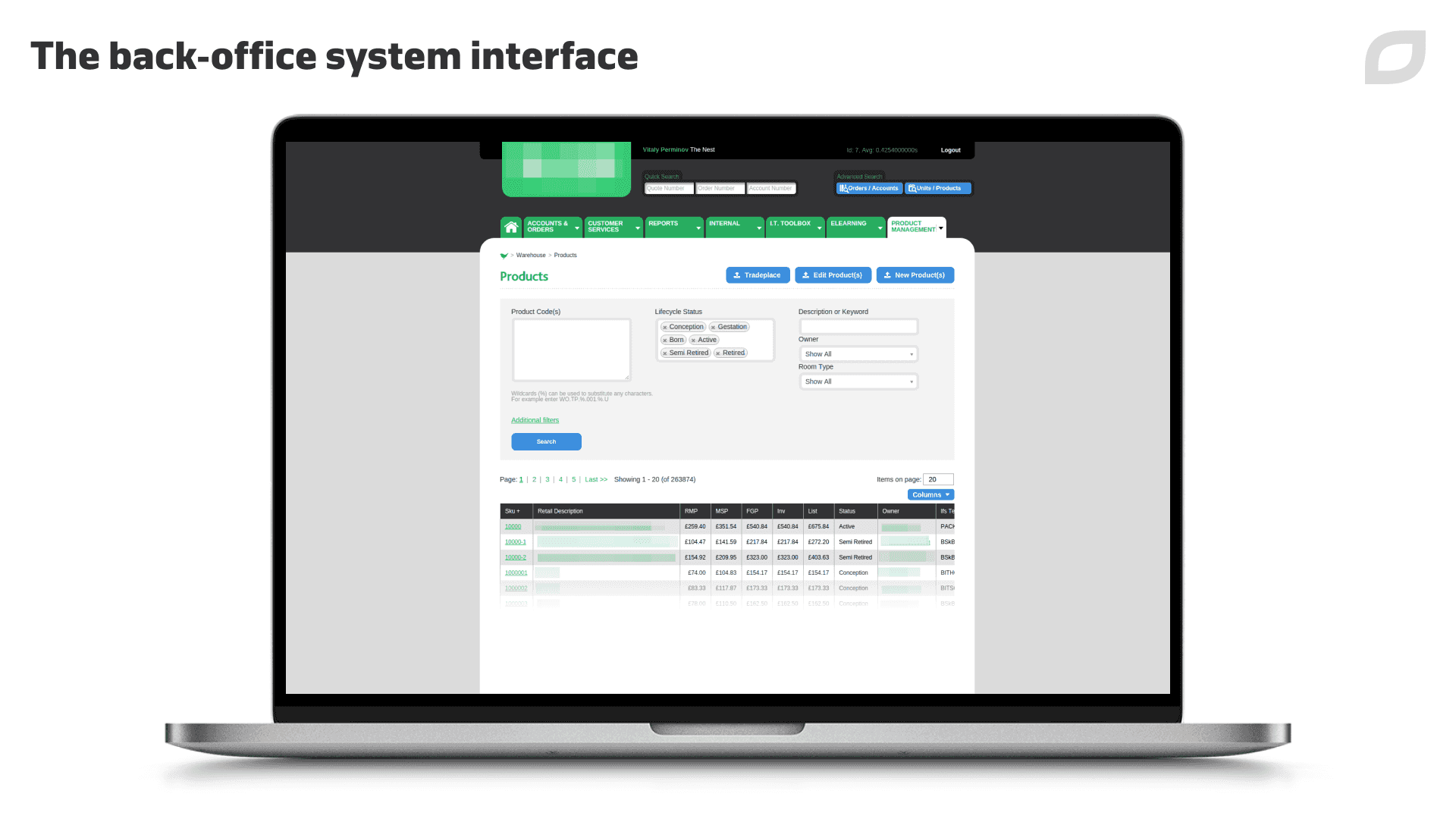
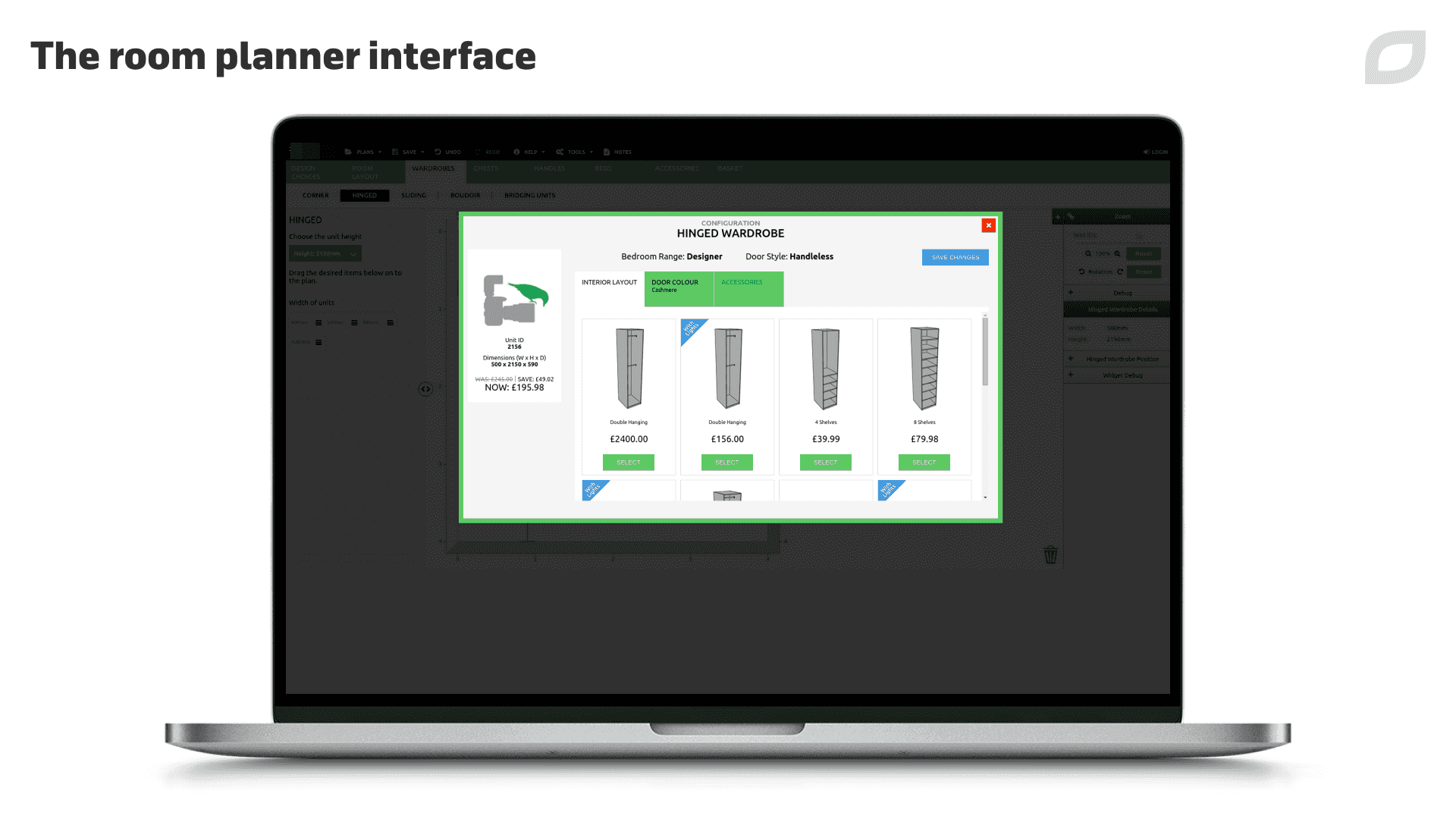

Services
Augmented and virtual reality development
Turn to Itransition for a full range of AR & VR development services. We design and implement bespoke immersive experiences for all compatible devices.

Case study
BI platform with AI and computer vision for a fashion retailer
Learn how Itransition delivered retail BI and deployed an ML-based customer analytics solution now processing 10TB of data.

Case study
Corporate learning portal for PayPal
This is how Itransition delivered a platform-based new hire training portal for PayPal, helping to reduce the learning curve for newcomers.

Case study
Salesforce CRM for a US insurance buyout agency
Learn how Itransition’s customized Salesforce CRM has brought a US insurance buyout agency 54% more leads.

Case study
An AR app for interacting with celebrities
Learn how Itransition helped to develop an AR app for interacting with celebrities for iOS and Android.